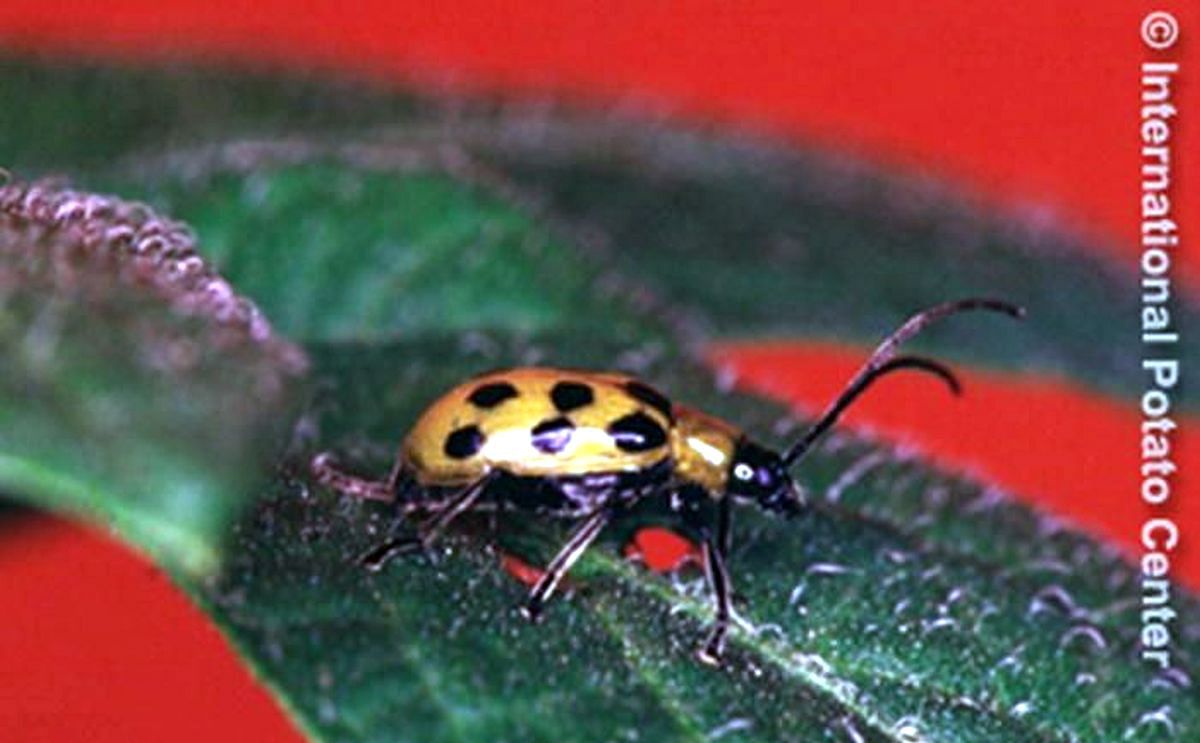Scientific description of the Leaf Beetles (2020)
Based on J. Kroschel. et al. (2020) Insect Pests Affecting Potatoes in Tropical, Subtropical, and Temperate Regions. In: Campos H., Ortiz O. (eds) The Potato Crop. Springer, Cham
The authors of this content are Jürgen Kroschel, Norma Mujica, Joshua Okonya, Andrei Alyokhin
Diabrotica viridula Fabricius, D. speciosa Erichson (Coleoptera: Chrysomelidae)
Distribution
Central America (Costa Rica and Panama) and South America (Argentina, Bolivia, Brasil, Columbia, Ecuador, French Guyana, Paraguay, Peru, Uruguay, and Venezuela (image below).

Adult of Diabrotica speciosa. (Courtesy: CIP)
Host range
South American Diabrotica species are presented in at least 116 species in 24 families. Diabrotica speciosa larvae developed well on maize, peanut (Arachis hypogaea L.), and soybean roots, and not so well on pumpkin (Cucurbita maxima Duchesne and Cucurbita andreana Naudin), beans (Phaseolus spp.), and potato roots. Diabrotica viridula, preferred maize as adult and larval food, and for oviposition (Cabrera 2003).
Symptoms of infestation
Feeding on leaflets by adults interferes with photosynthesis and, therefore, reduces production of tubers. Larvae damage stolons and form galleries in tubers (Cabrera 2003; Lara et al. 2004).
Impacts on production losses
In some areas, the most important economic damage to potato is caused by the subterranean larvae gnawing the surface of tubers, which lose quality and become susceptible to soil pathogens (CIP 1996). Eggs and larvae do not develop under dry conditions, so damage is most severe during wet seasons.
Methods of prevention and control
- Cultural practices.
Deep tillage leads to exposing of larvae and pupae to the action of predators and adverse environmental factors. Weeds that serve as alternating hosts should be eliminated (CIP 1996; Sanchez and Vergara 2002). - Chemical control.
In cases of heavy infestation, especially when potato plants are small, insecticide applications are recommended against adult beetles (CIP 1996; Sanchez and Vergara 2002).
